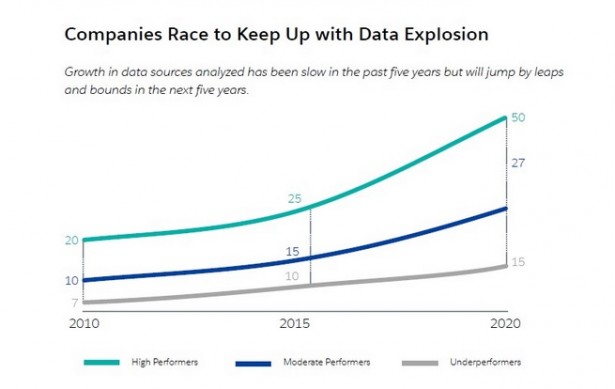How Analytics Will Jump to the Forefront of Business Strategy by 2020
 As more healthcare organizations implement electronic health records, medical schools implement big data and healthcare analytics programs and the pace of business continues to escalate, more business leaders will want to know the right insights at exactly the right time.
As more healthcare organizations implement electronic health records, medical schools implement big data and healthcare analytics programs and the pace of business continues to escalate, more business leaders will want to know the right insights at exactly the right time.
Enter analytics, still a relatively unchartered territory that’s expected to gain significant ground over the next five years. Between 2015 and 2020, the number of data sources analyzed will jump 83%, says the 2015 State of Analytics report from Salesforce. This is up from the previous five years, when the number of data sources actively analyzed by business grew just 20%.
In the study, Salesforce surveyed 2,091 business leaders, directors and executives worldwide to discover areas where analytics usage is on the rise and understand how high-performing organizations approach analytics.
These high-performing organizations’ business leaders intend to bring analytics to the forefront of their business strategies, as 90% of enterprise leaders believe analytics is absolutely essential or very important to their overall business strategies and operational outcomes.
 High performers are three times more likely than underperformers to be heavy analytics users, gleaning value via analytics in 10 or more disciplines. In fact, high performing enterprises will rely on a projected 50 different data sources by 2020, leading all performance categories tracked in the study.
High performers are three times more likely than underperformers to be heavy analytics users, gleaning value via analytics in 10 or more disciplines. In fact, high performing enterprises will rely on a projected 50 different data sources by 2020, leading all performance categories tracked in the study.
And since practice makes perfect, high performers are 5.1 times more able than underperformers to gather timely business insights from their current analytics tools.
High performers also embrace a culture of analytics from the boardroom to individual roles, as top teams are two times more likely than underperformers to say half of their employee base uses analytics tools.
Still, even high performers face challenges in analytics adoption and integration, listing the following as their top five challenges:
- Getting all the necessary data into one view is manual (53%)
- Too much data is left unanalyzed (53%)
- Spend too much time updating spreadsheets (52%)
- Analysis is performed by business analysts, not end users (50%)
- Turnaround time to get answers is too long (49%)
Download the 2015 State of Analytics report for the complete research.